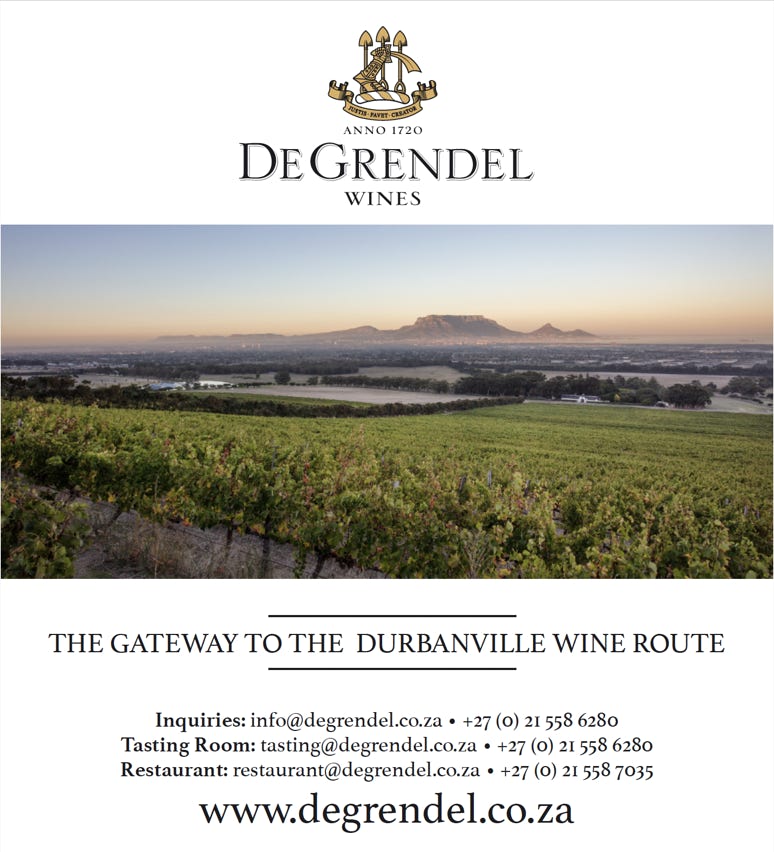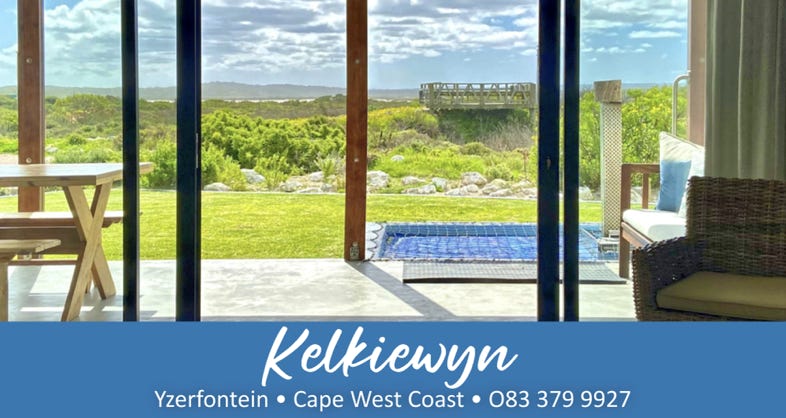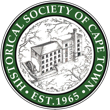
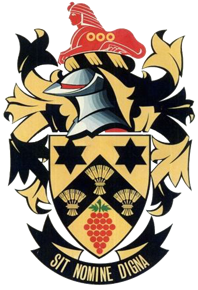



The need for a church
In 1825, a group of farmers from Pampoenkraal, a small hamlet on the eastern slopes of the Tygerberg Hills, requested permission from Lord Charles Somerset, the district governor at the Cape, to build their own church. The act of requesting a church to be built was not only needed to serve the religious needs of a growing congregation of locals and surrounding areas, but it had huge ramifications for the village to become a legal entity. Once a town or village was allowed to have a church, they could manage and govern their own local affairs and would be recognised as an official settlement. The story of Napier and Bredasdorp in the Overberg, fighting over who would get the church in their area, illustrates the importance of this symbol of church and state working together. In the case of Pampoenkraal, the request was granted and the Dutch Reformed Church was founded in 1825 and inaugurated a year later and Pampoenkraal became an official entity. In 2025, we celebrate 200 years of Durbanville, but the history of this area, including Tygerberg and its rolling hills, goes way back and it is this history that made and shaped the Durbanville we see today.
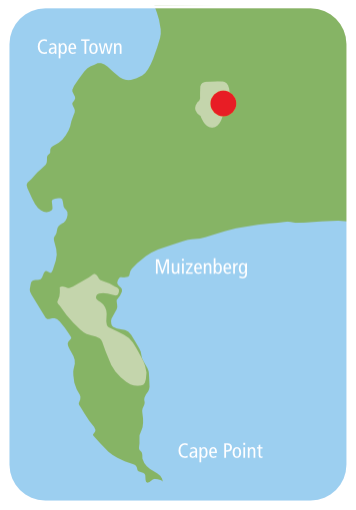
The land that shaped Durbanville
The geology and location of the rolling hills of Durbanville and Tygerberg are the bedrock for most of the business of the area, from the wine industry, farming, outdoor activities, tourism, picturesque residential real estate with a view and mining. The hills of Durbanville are the oldest rock you will find in the Cape and most of South Africa; at 560 million years old, it is considered ancient rock. It is part of the Malmesbury Siltstone Group and, because this area with its hills is so prominent, it is designated as the Tygerberg Formation (of which Signal Hill in Cape Town and Devil’s Peak are also part).

The Durbanville Dutch Reformed Church
A massive granite pluton intruded this formation about 6 km underground 545 million years ago and, with its immense heat, baked the surrounding rock into a harder form of siltstone called a hornfel. This metamorphosed siltstone is harder, weathers and erodes more slowly than normal siltstone and, thus, Durbanville hills are still here today and not eroded away like most of the Cape Flats, Boland and the Swartland. The hills are rounder due to faster erosion than, say, Table Mountain, which is made up of even harder rock. There was a stage where Durbanville hills were capped by these same
sandstones millions of years ago and might have looked like Table Mountain or Lion’s Head, but these layers have long disappeared due to undercutting.
Today, with this harder form of siltstone, miners have found this rock type makes perfect aggregate for building roads and, thus, a thriving business can be seen with all the quarries on the western side of the hills. The wine industry has also benefitted with this rock type that retains water on the surface better, keeping rivers flowing for longer and less surface water ends up as underground water.
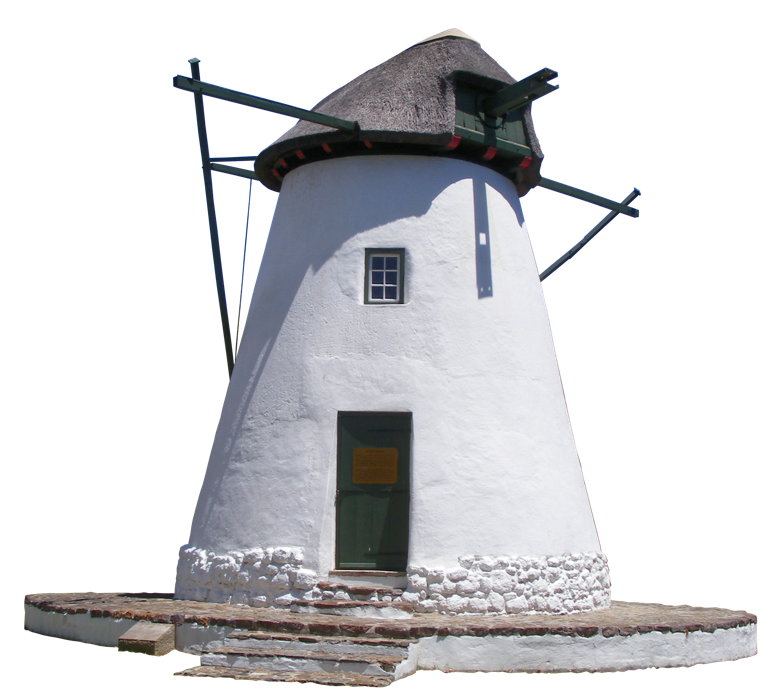
Onze Molen windmill was built in 1840 and continued to operate into the 1900s.
The Europeans arrive
There was a need for a sea route to the Far East as the Ottoman empire had closed off the land route. Bartolomeu Dias had rounded the Cape in 1488 and saw Table Mountain and surrounds, including Tygerberg hills, on his return journey. In 1647, the Nieuw Haarlem was wrecked on the coast off Bloubergstrand with a number of survivors living there for a year. During this time, they managed to explore the Diep River and the slopes of the Tygerberg. This shipwreck galvanised the potential for a refreshment station at the Cape. Five years later, Jan van Riebeeck set foot on the shores of the Cape and built a permanent settlement.
Additionally, when this siltstone decays, it ends up as a clay which also retains water. This area is one of the only wine-growing areas in South Africa that farms on siltstone which makes its wines unique. The rolling hills of this area allow for much more surface area for planting vineyards and, with its location so close to the Atlantic Ocean, the famous mist beltsthat envelop the hills allow the growing of vines without irrigation and help maintain these hills as one of the coolest wine-growing areas in the world.
Not to be forgotten is that the rock type and location allowed for the establishment of Renosterveld Fynbos (2-4 million years ago) as a plant species. This is one of the most endangered species
in the world with small pockets remaining on the hills.
The first people
About 120 thousand years ago, the oldest ancestors of modern humans had made the West Coast and surrounding areas their home. There is a good chance they roamed these hills. The hunter-gatherer San people arrived 20 000 years ago and the pastoral Khoi 2000 years ago. These clans and groups used this area on their seasonal migrations and for hunting game. It was not part of their way of life to put down permanent settlements. There was a time when the early European settlers shared this area with the Khoi but, in 1713, the smallpox epidemic wiped out most of the Khoi and San at the Cape and the remaining few fled the region or ended up working on local farms.
Pampoenkraal
In 1655, Jan van Riebeek had Jan Wintervogel explore the Diep River on the western edge of the Durbanville hills as a possible navigable river to engage in trade with the local Khoi. It would be years later, in 1683, when the Dutch East India Company (VOC) established a permanent outpost on the banks of this river. This Vissershok military outpost doubled up as an unoffical farm and is recorded as the first wheat farm in South Africa. In 1659, prior to the establishment of this outpost, a surveyor by the name of Pieter Potter was instructed to map out the Durbanville area. He discovered four lions and a permanent spring nestled by a pumpkin patch. For surveying purposes, he named the area Pampoenkraal (pumpkin corral) which became its unoffical name until 1825. In 1661, Tygerberg was named ‘Tjgerberghen’ and later Gevlekte Luipaartsberg, as the vegetation on the hills looked like leopard spots.
Ten years after Jan van Riebeek landed at the Cape, the Dutch had crossed over the Hottentots Holland Mountains and the ‘Kaapse Wagenweg’ was established which became the wagon route to the interior and beyond. The problem with this route was the sandy nature of the Cape Flats. Tracks were forged over Durbanville hills and around Tygerberg Hill because of its more solid surface down to Pampoenkraal which became a natural outspan. From here, the wagon route skirted around the sandy Cape Flats on more solid ground. Years later, a road was built (Voortrekker Rd) along the edge of Tygerberg through Belville which, at that stage, was called ‘12 Mile Stone’. This road only took off as an alternative route when, in 1845, John Montagu, the Colonial Secretary at the Cape, turned this rough track into a hard packed road. This road played a big part in the expansion of Durbanville at a later date and became the main entrance to Durbanville. Despite the loss of traffic over the hill route, Pampoenkraal was not affected too much as the settlement was thriving as a hub, servicing all the farms in the area as well as surrounding districts as an outspan and supply centre and this is where the wagon works were established.
At a later stage, the pass over Bain’s Kloof was opened and most of the traffic went via Durbanville. Meat, fruit, wheat and vegetables were needed to supply the endless number of ships rounding the Cape. Signal canons were placed on Kanonkop and Tygerberg to let farmers know that ships were in port and in need of produce or that there was impending danger.
The VOC had a policy that no one could own the area around the spring as this was a communal necessity so it took a while before residential properties were allowed to be sold in the village, but freehold farms sprang up on the surrounding areas. By 1715, under Dutch rule, there were about 22 well established farms in the area, including the wine farms you can visit today. It has to be noted that all these farms started out as non-wine producing farms with a small number of grapes planted for their own consumption. It was only in the late 1700s that farmers started switching to wine as their main source of revenue. This was accelerated by the wars between Britain and France which made Cape wines valuable.
A town with status
With the coming of the British second occupation of the Cape in 1806, John Jones managed to secure a grant of land within the boundaries of the Pampoenkraal village. This was the beginning of residential ownership. By the time Pampoenkraal, in 1825, legally became a town, a lot of the property was in private hands. What ensued were all the amenities that followed its new status such as schools, a courthouse, jail and police station and a magistracy.
Around the 1830s, there was widespread discontent amongst the Afrikaners with British rule at the Cape and the pending abolishment of slavery in 1834. A year later, the Great Trek started in order to escape British rule. Sir Benjamin D'Urban, the governor and commander-in-chief of the Cape Colony at the time, was very supportive of the Afrikaner cause. With acknowledgment of his support, the church elders petitioned to rename their village in his honour in 1836.
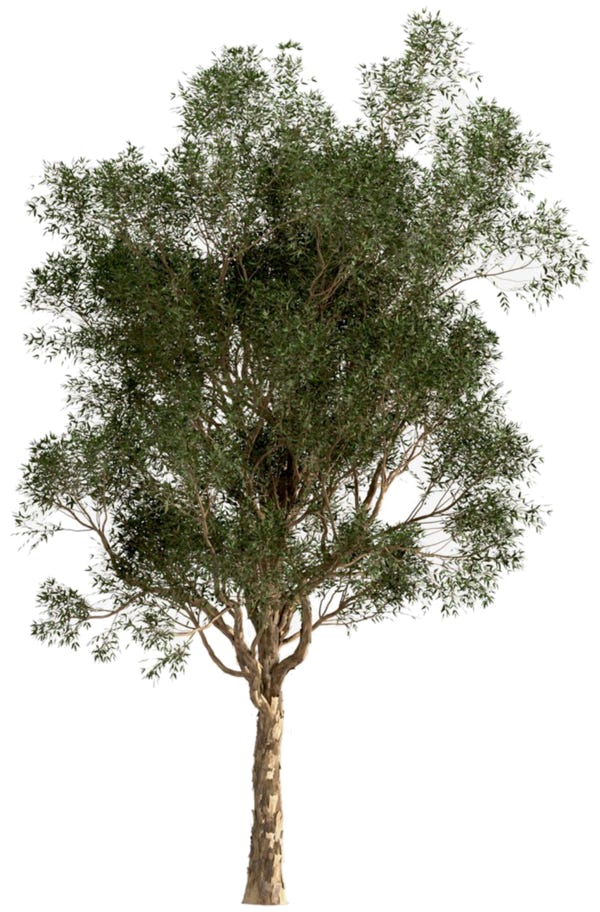
In 1886, Reverend G. Lawrence started an initiative to plant 3000 eucalyptus trees on Durbanville Avenue due to a derogatory remark by Bishop Gray stating that Durbanville was a small place with sandy soil and no trees.
The name ‘D'Urban’ became the official name of the town until 1886, when it was changed to Durbanville because Durban, in then Natal, caused postal and administrative confusion. Durbanville grew in the following years with its main objective still as a servicing hub to the local community but, in 1863, James King took control of a small wagon-building business which he and his family built up to become the biggest wagon manufacturer in South Africa, employing over 200 staff and sometimes producing 1100 vehicles in just three months. King was so influential in Durbanville that he was nominated as the first mayor of the town when it gained municipal status.

The beginning of Durbanville, Pampoenkraal, in 1860.

Majik Forest with its blend of parklands and woody thickets.
In 1890, a telegraph line reached Durbanville. In 1905, the construction of a Town Hall and a railway line in 1907 to Belville was suggested which was shot down by the local population as it would destroy the charm of their village and bring too many tourists (a railway station was built but it was serviced by a bus). Horse racing appeared in 1898 with the development of a professional course by 1922. Durbanville joined the Tygerberg Municipality along with Bellville, Parow and Goodwood in 1996. In 2000, Durbanville was amalgamated into the City of Cape Town Metropolitan Municipality.

Rust-en-Vrede with its beautiful Baroque gable.
Places to visit and things to do
Plattekloof Road (M14)
De Grendel
De Grendel, meaning "latch" in Dutch, was established in 1720, and has a rich history spanning from horse breeding to winemaking, with the Graaff family playing a significant role in its evolution. This farm was historically the gateway on the route to the inland settlements of Durbanville and Stellenbosch which had to be opened to traverse the Tygerberg. Enjoy wine tasting, vineyard and cellar tours, fine dining or picnicking in the gardens, hiking, and visit the De Grendel Art Gallery.

Part of an outdoor installation next to the Civic Centre commemorating the town’s history.
Tygerberg Valley Road (M13)
Durbanville Hills
Wine was produced on this farm from the 1700s by the Le Roux family but it was only established in the 1980s as a modern winery. The farm was purchased by a group of wine enthusiasts led by Charles Back in 1983, and they began renovating and expanding the existing vineyards.
Seven grape farmers and Distell agreed to build a cellar as part of a joint venture to make their own wine and, today, there are nine member producers. Durbanville Hills was named such to reflect the magnificent diversity of the surrounding landscape. Enjoy wine tastings and tours and visit the restaurant.

The small town of Durbanville as seen in the early 1900s.
Nitida Winery
The Veller family purchased the smallest of the Durbanville farms in 1990. Bernhard Veller took 2 weeks off work in 1992 to plant some vines, planning to only make a few barrels of wine. Three years later, they won their first gold medal for their Sauvignon Blanc. The farm’s name comes from the Protea knitted which grows in the natural Renosterveld on the farm, with the name "Nitida" meaning bright, healthy and cultured in Latin.
Maastricht Wines
In 1702, the farm was granted to Hendrick Seeger, a Dutch settler. Looking at the clay-rich soils, the settlers were reminded of the land of their hometown, Maastricht, hence the name. The original farmhouse burnt down in the early 1900s. The farmhouse was rebuilt in the 1920s with each generation of new owners adding their touches. During the Batavian Republic, Maastricht was used as a meeting place. The line of old oak trees planted by a Dutch monk in the 1700s can still be seen today. Maastricht was one of the first nine farms to be registered as a wine producer. Enjoy wine tastings and visit their restaurant.
Hillcrest Wine Estate
Hillcrest Wine Estate is a boutique winery which produces wines, olives and olive oil. The olive orchards were established in 1993 and vines were planted in 2004. Visitors can enjoy wine tastings, dine at the restaurant, and explore the quarry on the estate.

Diemersdal manor house with its 1903 neo-classical gable.

Bontebok which nearly went extinct in the early 1800s were introduced into the Tygerberg Nature Reserve in the 2000s.
Bloemendal Wine Estate
The 300 year old farm, Bloemendal, was acquired in the late 19th century by the great-grandfather of Jackie Coetzee, until it was purchased by a private company in 2008. The farm originally supplied fresh produce to the VOC ships. Bloemendal's first cellar was completed in 1920 and was registered as an estate in 1987. Visit the tasting room, eat at their amazing restaurants, or enjoy a stay at the accommodation on offer.
D’Aria Winery
During 1698, the farm ‘Doordekraal’ was first granted to Tryntje Verwey, whose husband died shortly after they emigrated to the Cape. Tryntje's hard work and success in farming earned her the accolade "De Boerin" meaning "The Lady Farmer." The farm ‘Springfield’ was first granted to Ocker Cornelis Oliver, who later married
Alida, one of Tryntje's daughters. Alida was also widowed at a young age. Barinor Properties purchased the two farms in 1998 and 1999, establishing D'Aria Vineyards. The estate currently encompasses Poplars Restaurant (part of which dates back to 1702), D'Aria Guest Cottages, D'Aria Function Venue and the winery.
Altydgedacht
The farm was granted to Elsje van Suurwaarde in 1698 by Simon van der Stel. The first cellar was built in 1702 and her name lives on in the town of Elsies River. The Parker family arrived as settlers in 1819 and acquired the estate in 1852, marking the beginning of their six-generation legacy on the farm. Emperor Napoleon, who was in exile on St Helena, was separated from his aide, Count de Las Cases, who was sent to the Cape for clandestine and spying behaviour. He was imprisoned in the Castle but spent some of his time on this farm.
Vissershok Road (M48)
Hoogekraal Farm
The farm is part of the Tygerberg Mountain Bike Club's trail network and was once owned by the Starke family, who also owned Contermanskloof, Oatlands, and Mont Blanc. It is now known for its mountain biking trails, offering a variety of experiences, including the 8.5 km Hoogekraal Main Loop and feeder trails. It offers 24 km of single and jeep tracks carved into the indigenous Renosterveld as well as pet-friendly walking trails.
Meerendal Wine Estate
Established in 1702, Meerendal is an historic wine estate with a legacy spanning over three centuries. Originally granted to Jan Meerland, the estate flourished under his widow, Christina, who expanded it in 1712. By 1714, Meerendal was already producing 100 leggers (53,000 litres) of wine for export. A pioneer in Pinotage production, Meerendal continues to honour tradition by fermenting in its original open-top concrete fermenters (Kuipe), built in 1943.
Committed to sustainability, organic viticulture, and green energy, the estate is home to the oldest vineyard in Cape Town – a 1938 Muscat d’Alexandre – as well as a Heritage Block Pinotage vineyard planted in 1955. Meerendal is a founding member of the prestigious Old Vine Project (Certified Heritage Vineyards) and was among the first 14 estates to receive official "Estate Wine" status in 1973. With over 50 years of bottling under its own label, Meerendal blends history with modern excellence. Whether indulging in fine wines, gourmet dining, outdoor adventure, or serene relaxation, visitors experience the essence of this iconic Cape Winelands destination.
Signal Gun Wines
Hooggelegen Farm was established in 1704, although freehold farm records suggest the farm existed under a different name in 1702. The farm was formed to provide fresh produce for the VOC ships. More than fifty cannons were installed on mountains that could call the burgher militia to defend the Cape. The original signal gun remains on the farm and is fired on special occasions. The farm has been in the De Wit family for five generations. In 2010, MJ and Estani De Wit developed the Signal Gun wine brand as well as a restaurant. Visit their tasting room and try their craft beer range.

De Grendel.
Adderley Road (M58)
Diemersdal Wine Estate
Diemersdal was granted to Hendrik Sneewind in 1698 by Simon van der Stel who gave him permission to plant vegetables and grains. He died in 1713 and his widow remarried Captain Diemer. The farm came into the hands of the Louw family in 1885. Since then, wine making has been the main objective.Today, one can visit this classic estate with its fine examples of Cape Dutch architecture, lunch at the Farm Eatery and experience their award-winning wines.
Loch Lynne
One of the newest wine estates, situated on the slopes of Durbanville, the farm still retains its farming activities and has been transformed into a destination venue for weddings, corporate functions and other bespoke events.
Klipheuwel Road (R302)
Groot Phesantekraal Winery
In 1698, Groot Phesantekraal was granted to Olof Bergh, who, despite many brushes with the law, managed to regain his status and accumulate numerous farms. The farm was passed from the Bergh family to the Louw family before it was acquired by Arend Brink in 1897. While vines were always cultivated there, the farm was also a successful cattle, sheep and grain farm until the present owners, Andre and Ronelle Brink, planted 50ha of vineyards in the late 1990s. Visit My Boozy Kitchen restaurant housed in the expertly restored stables.
Durbanville Central
Rust en Vrede
It was originally built in the 1840s and served as a prison, police headquarters and a magistrate's court. In 1927, the building was sold to Robert John Meneely, a clockmaker, who converted it into 4 semi-detached houses: The Oaks, Ingle Nook, My Vreugd, and The Retreat. After the Meneelys passed away, the municipality purchased the property in 1978 and began restoring it. It was declared a National Monument in 1984 and now houses a gallery, clay museum, art studios and a coffee shop.
Durbanville Nature Reserve
This is a six-hectare site that conserves two critically endangered veld types - Swartland shale Renosterveld and Cape Flats sand fynbos - along with many threatened plants and animals. The nature reserve offers walking trails, picnicking, bird watching, educational activities and a venue to hire.
Durbanville Rose Garden
It was established in 1979 as an initiative of the Western Cape Rose Society under the auspices of Mr and Mrs Lindner and the Durbanville Municipality. Part of the garden is located on land that originally formed part of the Old Eversdal Estate and was donated by the Schabort Family. The Schabort family burial ground and memorial is in the garden. The first roses were planted in 1979 and the trial garden began in 1981. The garden was officially opened by Gene Louw in 1983. Free entry to explore and relax.

Durbanville Rose Garden.

The Dovecote at Hoogekraal.
Durbanville Racecourse
Horse racing was staged at Durbanville from around 1898. Races were held partly for recreation but also to finance the accommodation of the hunting club's dogs. The last amateur Durbanville Gymkhana Club race meet was held in 1955. It was then renamed the Durbanville Turf Club and, finally, the Cape Hunt and Polo Club. It amalgamated with the Milnerton Turf Club under the umbrella of the Cape Turf Club. It is one of two racecourses in the Western Cape and is a left-handed 2000m near oval course, with a run-in of 600m and no straight course.
Onze Molen
The mill was erected in 1840 and continued to function as such until after the turn of the 20th century when its mechanism and top portion were removed, and the remaining structure was converted to a horse mill. It is one of only two tower mills erected in the Malmesburg district and, since its restoration in the 1970s, it has become a focal point for the Onze Molen retirement village. It was declared a National Monument under old NMC legislation in 1984. It is well worth a visit.
Historical buildings of Durbanville
With the rapid expansion and modernisation of Durbanville during the early 1900s, the town lost many of its historical houses and buildings, but a few have remained and are well worth visiting. To get you started: www.theheritageportal.co.za/article/walking-tour-historic-durbanville. Visit Heritage Square where the King brothers once had their wagon empire and is now a modern centre but with lots of replicas, murals and photos of Durbanville’s bygone days.
Clara Anna Fontein
The first reference to Clara Annaas Fonteijn was in1732 but the property goes back to the mid 1600s. In 2013, Rabie Property Group entered into a joint venture with the landowner, the AFM Louw Family Trust, and the property became a small game farm with zebra, springbok, bontebok, ostrich and eland which can be enjoyed by game drives, horse safaris or bush walks. Also on the property is a Lifestyle Centre and the original restored farmhouse.
Tygerberg
Tygerberg Nature Reserve
This 300 ha nature reserve is in the Tierberg range of hills and represents one of the few surviving pockets of the highly threatened Swartland Shale Renosterveld. There are nearly 500 different plant species here, 12 of which are threatened with extinction and 8 of which exist only in Cape Town. Three of the plant species of Tygerberg exist only within the boundaries of the reserve itself. In addition, there are over 100 bird species and a variety of wild mammals, reptiles and amphibians. The park hosts the Kristo Pienaar Environmental Education Centre which is a popular venue for school excursions and education programmes.
Mountain biking in Tygerberg
The Tygerberg Mountain Bike Trails has become one of the best, well used and extensive biking trails in South Africa. Visit https://tygerbergmtb.co.za/ for more information.
Durbanville Wine Safari
Park your car at one wine farm and jump on the hop-on-hop-off experience which takes you to most of the leading wine farms in Durbanville with routes through the vinyards and backroads. www.durbanvillewinesafari.com

Tygerberg Hills is one of the biggest centres for mountain biking in South Africa.
Historical Timeline



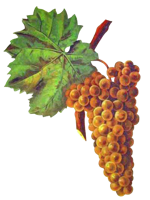
1723: the 12-pounder Dutch gun, cast at Finspang, Sweden, is placed on Kanonkop for signalling for commercial and defence purposes.
The siltstone that makes up Tygerberg and Durbanville was deposited in an off-shore shallow sea 560 million years ago.
2-4 million years ago, Renosterveld, as a plant species, takes root in the rich soil derived from shale on Tygerberg and Durbanville.
20 000 years ago, the San inhabited this area followed by the Khoi about 2000 years ago.
1683: Vissershok Outpost on the banks of the Dieperivier is established by the Dutch East India Company (VOC). This outpost is recorded as the first wheat farm in South Africa.
1702: As early as this date, vineyards were planted in the area of Durbanville and Tygerberg.



1858: Duminy and Whitcomb established Durban Wagon Works. In 1863, James King, an employee, purchased the business. Under his leadership, the company became the biggest wagon manufacturer in the Cape. He renamed the business King Bros - Carriage and Wagon Builders.
2000: Durbanville was amalgamated into the City of Cape Town Metropolitan Municipality.
1825: Tygerberg farmers request a church be built in the small village, thus ‘Pampoenkraal’ became the official name for the settlement.
1886: D’Urban was renamed to Durbanville in order to avoid confusion with Durban in then Natal.
1996: Durbanville lost its municipal status and was dissolved into the Tygerberg Municipality along with Bellville, Goodwood and Parow.
1836: Pampoenkraal was renamed D’Urban.




1898: Horse racing was staged at Durbanville. In 1922, it was officially known as the Durbanville Gymkhana Club.
Information
All information is given in good faith but, as times and facilities may change, the author and publisher cannot be held responsible for any inaccuracies. (Thanks to Durbanville Heritage Society for their input) Proofreading: Shelley Woode-Smith • Citations available on request
©Richard Smith • Gateway Guides edition 1 • 2025

















